Introduction
Koolance HX-360XC 360mm Radiator Review
The intention of this write up is to provide information and performance data about the Koolance HX-360XC 360mm Radiator for inclusion in the Extreme Rigs Rad Round Up 2015. I’ll be keeping the review section short and factual, focusing on presenting the performance data compiled through the numerous tests carried out. First of a big thanks to Koolance for providing this sample of the HX!
What’s in the box?
The HX-360XC sample sent from Koolance did not have an outer retail sleeve. It arrived in what might normally be considered the inner protective box. The radiator had no extra protection inside the box, which as you’ll see later was a shame. At one end a flap lifted up revealing a bag with mounting screws for attaching the fans. This is unusual for Koolance who normally protect everything they make with large amounts of foam.
Extent of delivery:
1x HX-360XC Radiator
12 x 28mm x M4 Phillips Head
The screws appear to have been painted, rather than anodized and were rather scratched up when I took them out to take a look. The screws are M4 which always makes me happy and are a custom length of 28mm.
Onwards to technical specifications!
Technical Specifications
Technical specifications as listed by Koolance:
Weight 3.50 lb (1.59 kg)
Wetted Materials Brass/Copper
Fins Per Inch (FPI) 30
Fan Capacity 3 x 120mm
Dimensions Measured on the Radiator Tested (retail unit):
Radiator Core Dimensions:
I’m not sure if my ruler is wrong or just the operator, but I measure to what I believe to be industry standard which is the number of fins next to each other per inch. This does NOT include counting both rows of fins in split fin type cores such as the HX-360XC. So I am unsure how Koolance measure to get 30 PFI as listed in their specs. Here we can clearly see a FPI count of 20 on the HX-360XC:
Finish
The Koolance HX-360XC is finished in a matte black paint which has an appropriately sized Koolance logo placed on one side. Unfortunately the black finish scuffs up quite easily and the sample unit sent was already marked from rubbing against the cardboard.
Here again is the scuffed marking on the paintwork:
In the following pictures I want to highlight 2 things:
• The height that the ports sit proud of the tanks and the radiator itself. When measuring I measure the thickness along the sides so won’t include the extra 3 – 4mm of the ports.
• What appears to be a poor join of the tank end which was then painted over. The radiator passed the maximum flow I could pump through it (Iwaki RD-30 at 24v at an estimated 4gpm) without leaking, but still manufacturing process and quality control could have been better.
Features
A welcome feature is the protection plates under the fan mounting screw threads. This will help prevent damage to the core from installing fans with incorrect length screws.
Last thing to note is that the sides of the encasing are very light gauge formed sheet, which I think is made of copper. Whatever the material, the point is that the side panels are very flimsy and I believe I did crush some of the outer fins by picking up the radiator when grabbing it across the center fan position. Sadly the HX-360XC does not have a very sturdy or strong solid feeling about it.
The HX-360XC has just the 2 ports and the internal shrouds are 5mm on both sides. Let’s see how it performs…..
Flow Performance
The Data
As all the testing in this round up was performed with the exact same equipment, using the exact same methods I have decided to keep each radiators page uncluttered by posting our testing methodology, test set-ups and equipment used in a single location. To see exactly how the tests were carried out, details of the test set ups and equipment used, please head back to the RRU’15 Test Equipment Page.
Restriction Test
It’s generally agreed that radiators are one of, if not the least restrictive components in the water cooling loop. There are some exceptions however, so this must still be verified through testing:
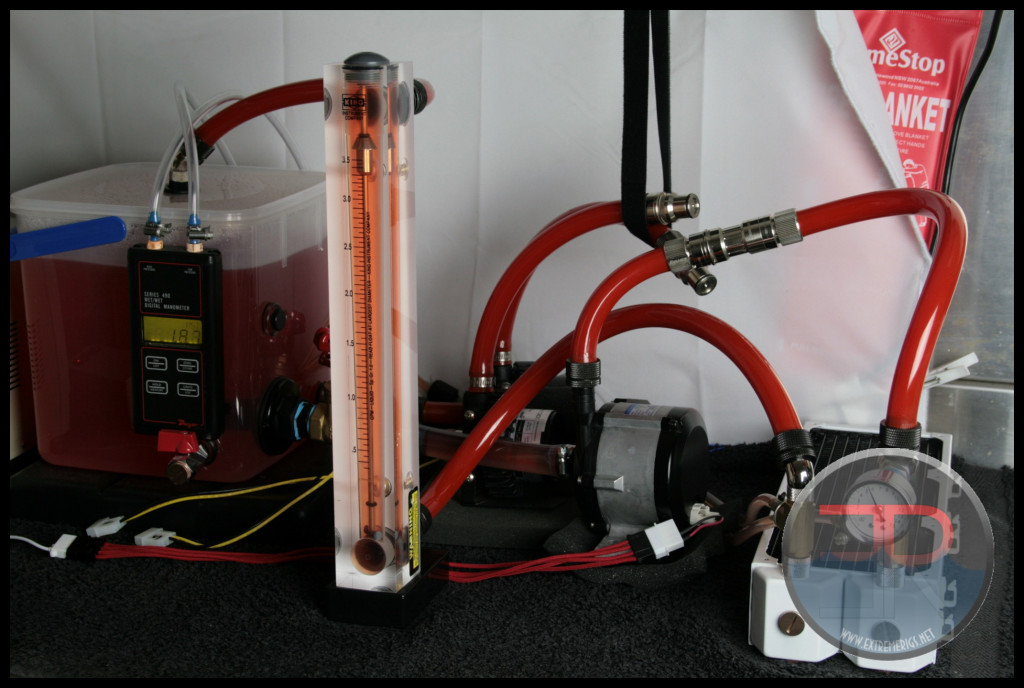 The photo above is of the restriction test bench. The HX-360XC is not loaded so please disregard the data in the pic as it does not relate to the HX
The photo above is of the restriction test bench. The HX-360XC is not loaded so please disregard the data in the pic as it does not relate to the HX
Here is the raw data at the tested flow rates, displaying the measured Differential Pressure across the HX as flow rate was increased.
The table numbers indicate that the HX-360XC is a fairly restrictive radiator. However numbers in isolation can only tell half the story. By plotting against other components it more easily shows the whole story. I have decided to use a HeatKiller 3.0 CPU block as the reference in these plots for two reasons. Firstly there is no chance of the plot being cluttered by curves overlapping and secondly it gives a reference point against a fairly common loop component of average restriction. For radiator to radiator restriction comparisons please see the RRU’15 data pages. As with all the radiator restriction plots I have limited the maximum flow rate displayed to 2.0 GPM as I suspect there are very few systems that operate above 2.0 GPM. For more information on how to read a restriction plot check out our guide.
Now that we see how the HX-XC performs vs flow we can take a few of those data points and compare to the other radiators in the round-up:
As can be seen the HX-XC is on the higher end of the group. While the pressure drop is not unreasonable there are better choices out there if flow is a concern.
Onwards to Thermal Performance!
Thermal Performance
The Thermal Data
Moving on from the restriction test bench the Koolance HX radiator was loaded into the thermal test chamber for a series of 9 tests – consisting of 3 flow rates, each having 3 different fan rpm rates tested. I felt the thermal test data was most important and which you as the reader would be most interested in.
Below is the final data results gathered from at least 2 data logging runs at each flow rate and fan rpm combination. The most stable 15 minute period from each logging run was used and then averaged with the other runs to obtain the data for the table below. A total of 16 temperature sensors were used in the thermal test chamber (8 air in, 2 air out, 3 water in, 3 water out) each take a reading every second and logged via a CrystalFontz unit. The data in the table below is the result of the logging runs which has then been used to create all the plots and tables there-after.
The performance metric of critical importance is the delta between the warm coolant temperature in and the cold ambient air temperature in to the radiator. Given that the system is well insulated and in equilibrium and we know the heat input to the system then we can also calculate a very important number – that is the amount of power required to raise the coolant temperature 1C (or 10C which is more useful reference point).
Like the vast majority of the other radiators tested, the Koolance HX cares little about flow rate, particularly above 1.0GPM. Here are some plots to show the variance:
For those who love the curves, I have plotted a chart and added a poly-line to extrapolate the data. Note that the extrapolation of the curve is much more sensitive to error than in between the tested range.
So the performance is not greatly affected by varying flow rate. However Delta T is not always helpful when thinking about how many radiators you would need to cool your system. Instead it’s more useful to know the delta/W, or more usefully, the inverse metric of W/delta C.
The metric plotted below tells us how many watts are dissipated by the radiator when the coolant rises 10C above ambient temperatures. (10 Delta T):
As expected increasing fan speed and therefore airflow through the radiator is the primary determinant in changing the radiators performance. This data can now be plotted as a pretty curve so that an end user can interpolate their own fan speed. Note again that the extrapolation of the curve is much more sensitive to error than in between the tested range.
This makes it easier to see that at higher fan speeds that a low flow starts to impact the cooling performance. This makes sense if you take it to the extreme and think about a very low flow rate where the coolant is already cooled 99% of the way to ambient with 10% of its journey through the radiator. In this example the radiator is not being efficiently used. 90% of the radiator surface area would then be wasted and you could have used a smaller radiator.
Having said all of this in this next plot all three flow rate results were averaged together to produce one curve. This works well because the radiator was so flow rate insensitive. Averaging reduces test error of course so this helps further to be sure of our data and is more useful therefore for comparing to other radiators.
Now let’s see how the Push data compares to the push/pull data:
The difference here is quite large – with it’s high FPI this is clearly a radiator that is optimized for high static pressures and that will do well with Push/Pull fan setups.
Now let’s analyze that data.
Data Analysis
Using the data compiled from the Koolance HX thermal testing I have compiled the following tables in an attempt to show another way how the HX performance varies against itself at the flow rates and fan speeds tested. Let’s start with the raw data:
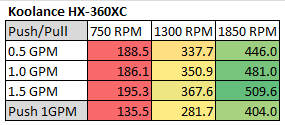 Now we can use these to show percentage gains relative to a reference point. It’s an interesting way to show gains/losses while changing a variable. This first table shows performance gain or loss relative to 1.0GPM flow rate:
Now we can use these to show percentage gains relative to a reference point. It’s an interesting way to show gains/losses while changing a variable. This first table shows performance gain or loss relative to 1.0GPM flow rate:
This shows that increasing flow to 1.5GPM has a steady gain while lowering flow to 0.5GPM only affects higher airflow performance.
We can also focus on 1300RPM as our reference and see how much gain or loss in performance we get by changing fan speed:
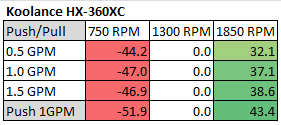
As expected the change is dramatic. Lastly we can combine both and choose 1300 RPM and 1.0 GPM as our reference point to show both effects concurrently:
So from the data above we can get a very good idea of how the Koolance radiator performs relative to itself. But there is a large selection of 360mm radiator models to choose from, released from numerous manufacturers. So, we need to start comparing performance between them. To see how the HX performed against the other radiators in this group I have included the averaged flow rate comparison charts from the Round Up. We know that the flow rate has little impact on thermal performance so averaging of the 3 flow rate results gives us a good look at head to head performance at the rpm speeds tested at with even less error.
Let’s start off with the Push only data first:
750RPM in Push will most likely be the worst case performance for a high FPI radiator like the Koolance. The result here then is no surprise.
At 1300 RPM the HX-XC is already starting to climb up the rankings.
At 1850RPM it is now near the top. Now let’s look at Push/Pull data where we would expect it to do even better!
750RPM is still too low for the HX-XC to shine even with push/pull.
At 1300RPM the HX-XC is already starting to shine and ends up in 4th place.
Now at 1850RPM the HX-XC performs excellently, only beaten out by the Black Ice GTX which is another radiator designed purely for high static pressure, high airflow situations.
Using only the 1GPM data we can then combine the Push and Push/Pull data for an interesting though busy plot:
At 750RPM as we know the HX-XC won’t perform well, and at these speeds there are many better choices with even some Push only setups beating out the push/pull.
At 1300RPM you can really see the difference that the extra fans make to the HX-XC’s performance.
Once at 1850RPM the HX-XC is in it’s element.
From all of these results we can create a “master performance factor”. The radiator with the best cooling ability (W/10ΔT) at each gpm/rpm combo was awarded a score of 100, and each other radiators W/10ΔT result was scored as percentage of the top performer:
This clearly shows the performance skew. Then all the percentage scores were averaged giving us the Averaged Performance Factor of each radiator. This way of looking at the comparison takes away any advantages that a radiator may have at higher or lower fan speeds and looks at an overall average. While this appears fair it does tend to favor those radiators that are all rounders and those radiators which do very well at high RPM. Most users should be more focused on their specific use case. Check in the Round Up for performance comparisons at every gpm/rpm combo for even more details and cross comparison results. Let’s start with Push only again:
Unsurprisingly the HX-XC suffers in Push only. Despite a good score at 1850RPM it’s severely hampered by it’s low performance at lower RPMs.
In Push/Pull though the HX-XC is one of the better performing radiators finishing in 5th place thanks to it’s great performance at 1850RPM.
Next up – Summary!
Summary
Push Only Performance – 2/5
Push/Pull Performance – 4/5
Overall Performance – 3/5
Koolance have produced an extremely high performance radiator with the HX-360XC when paired with high speed fans in push/pull. Due to it’s core design the HX-360XC performs very poorly compared to others in the group at low fan speeds.
The HX-360XC was one of the more restrictive radiators in the test group, so “pump power” should be considered if you intend to run multiple HW-360XC rads in the same loop. Two of these rads would equate to approximately 1 cpu block worth of restriction.
Features & Quality – 2.5/5
I found the built quality, finish and packaging all to be below reasonable expectations. The matte black finish of the HX-360XC scuffs easily and the sample I received was already blemished due to the lack of an bubble wrap lining. Personally I found the extent of the markings to be unacceptable on a brand new product. Add to that the poor join on the sample which unfortunately was just painted over and this radiator would have been something I would have considered RMA’ing.
Summary
The HX-360XC from Koolance is a no frills radiator which has a focus on push/pull performance. Unfortunately the finish and presentation has room for improvement though.
Where to buy: Koolance – $85








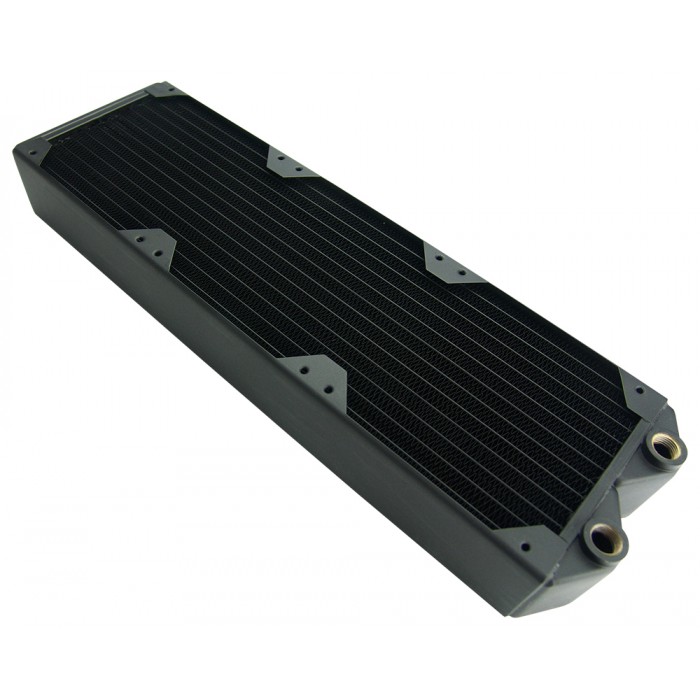

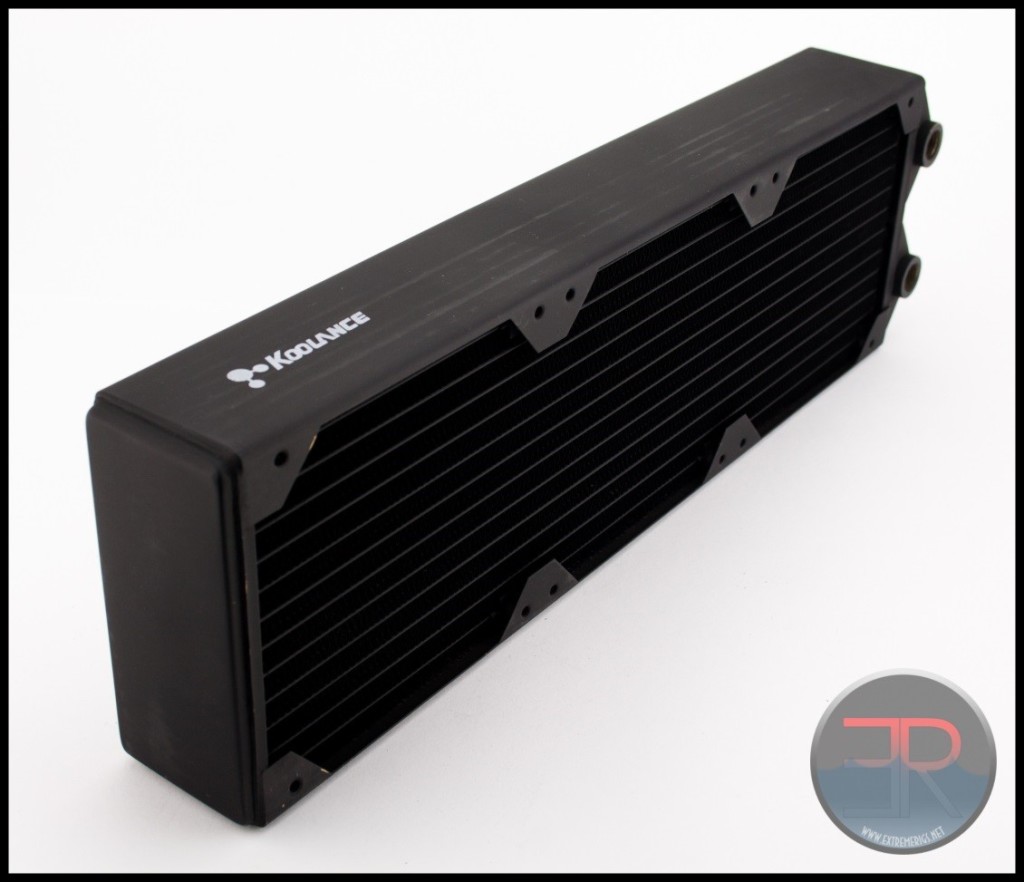
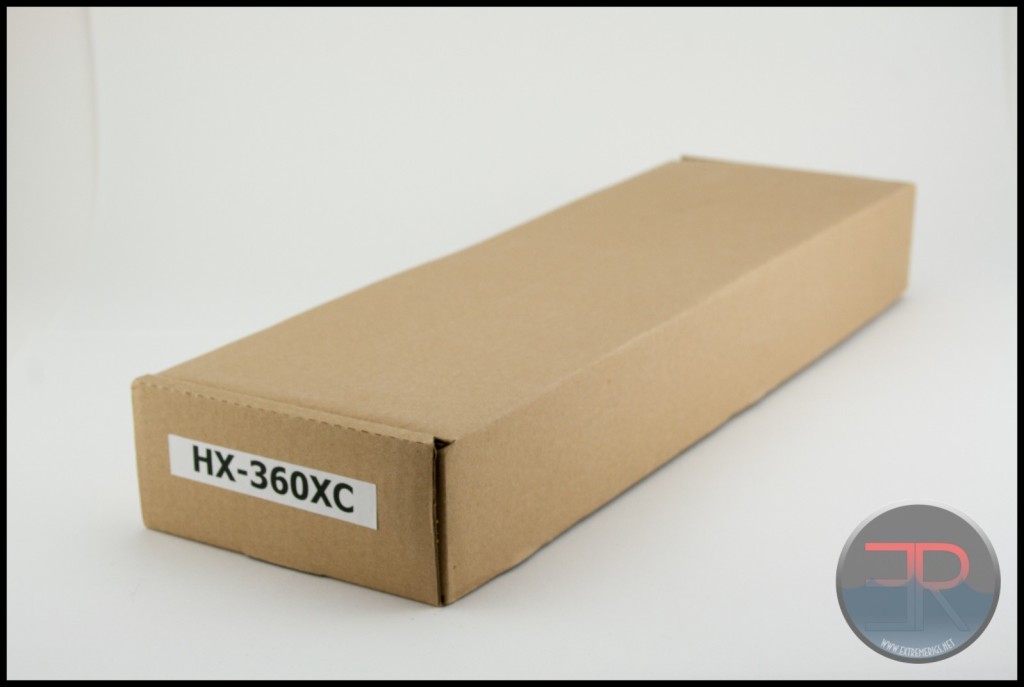
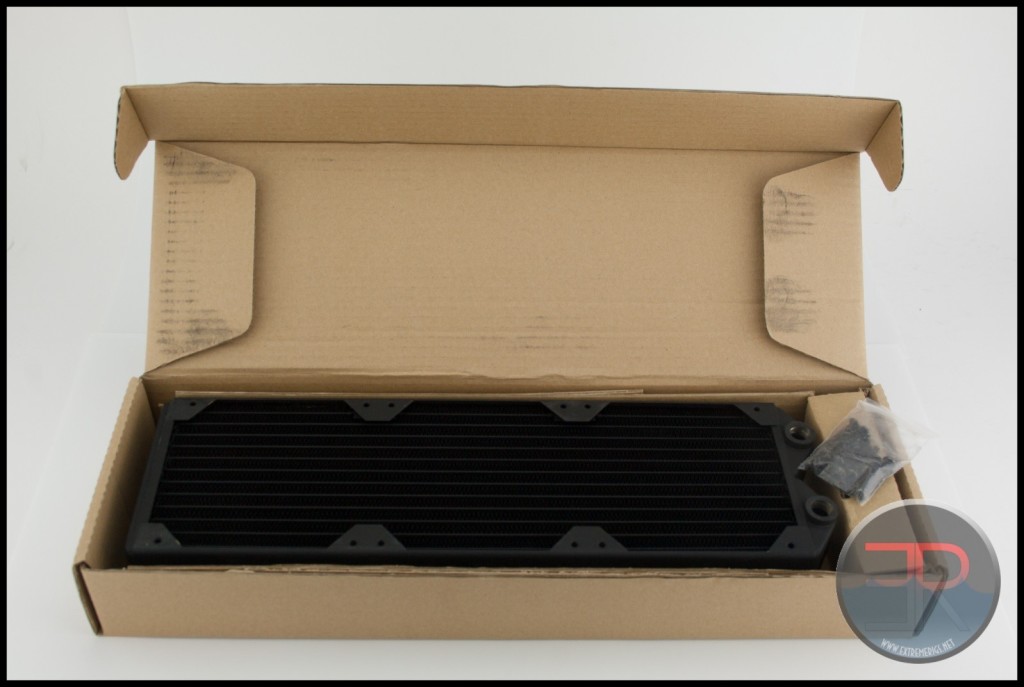
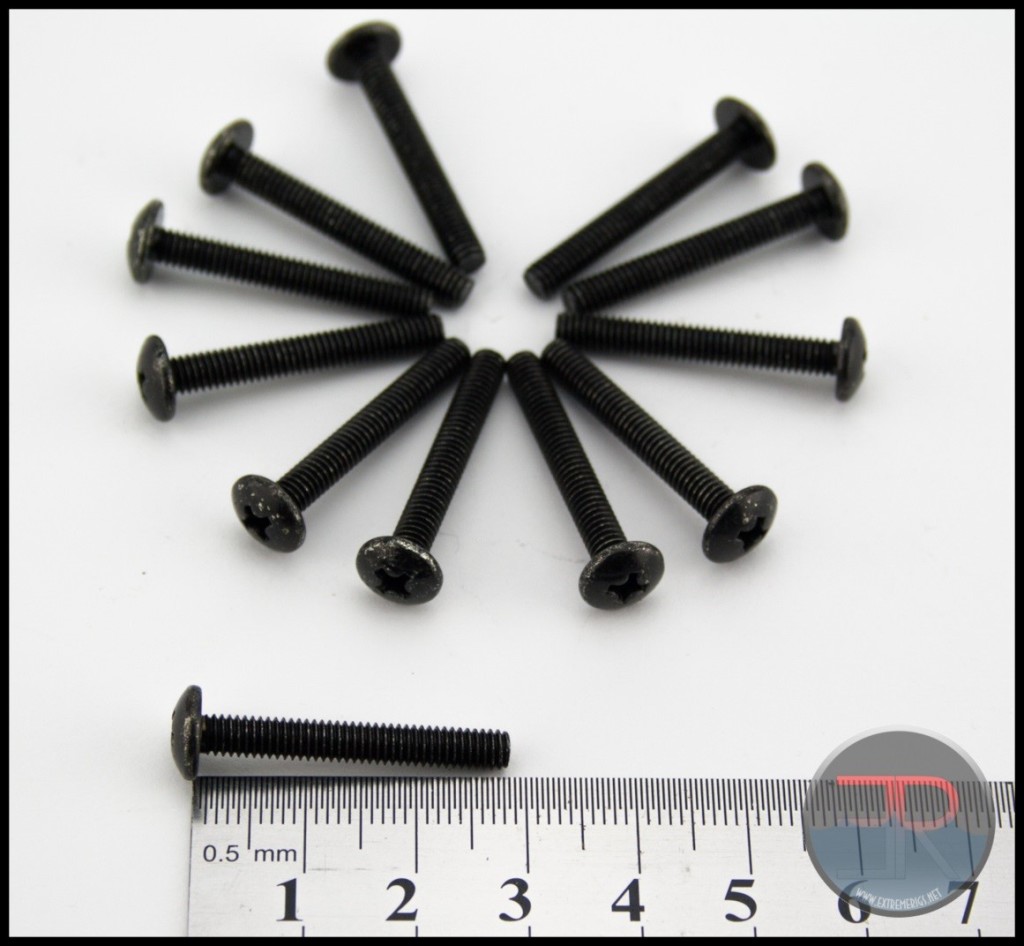


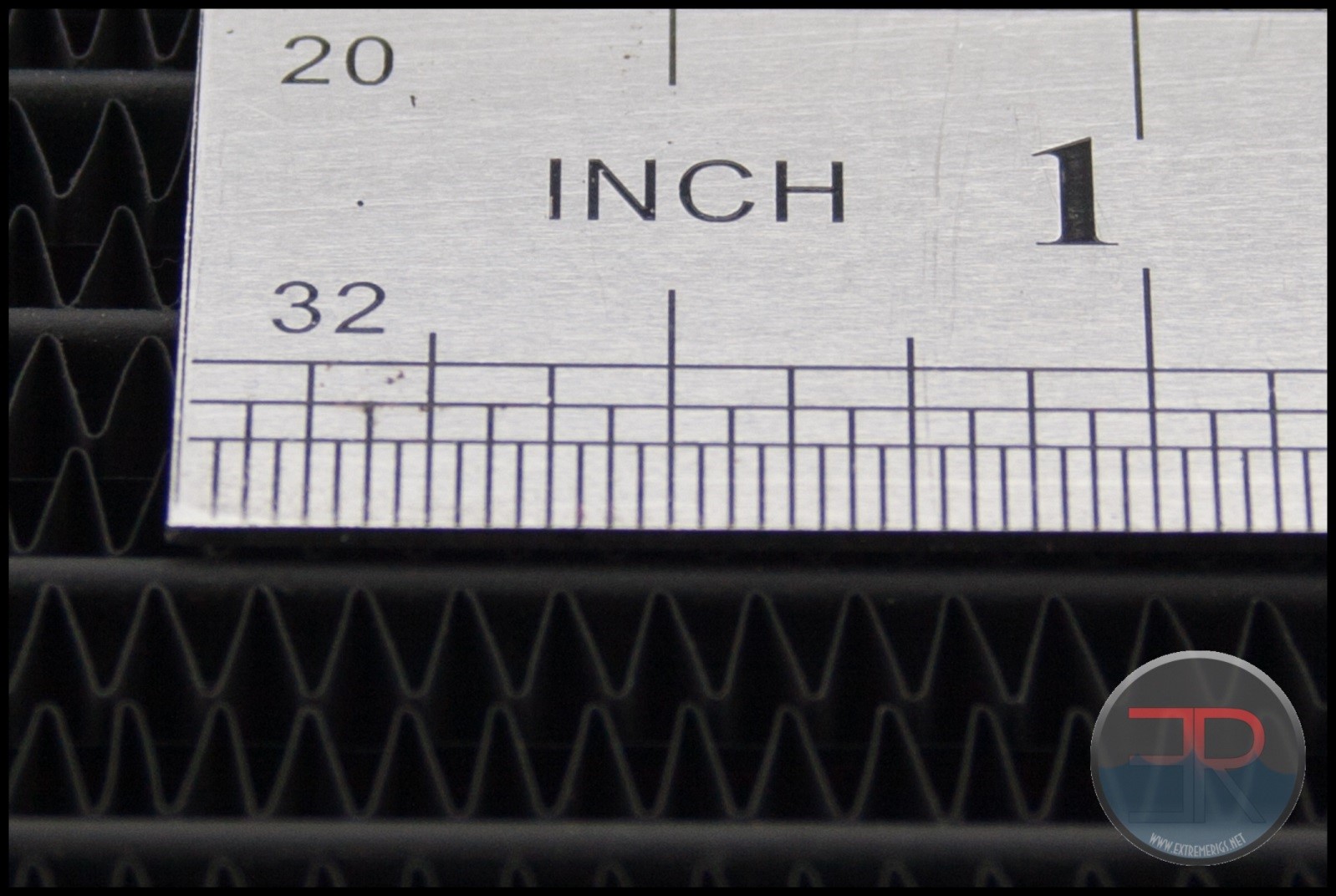


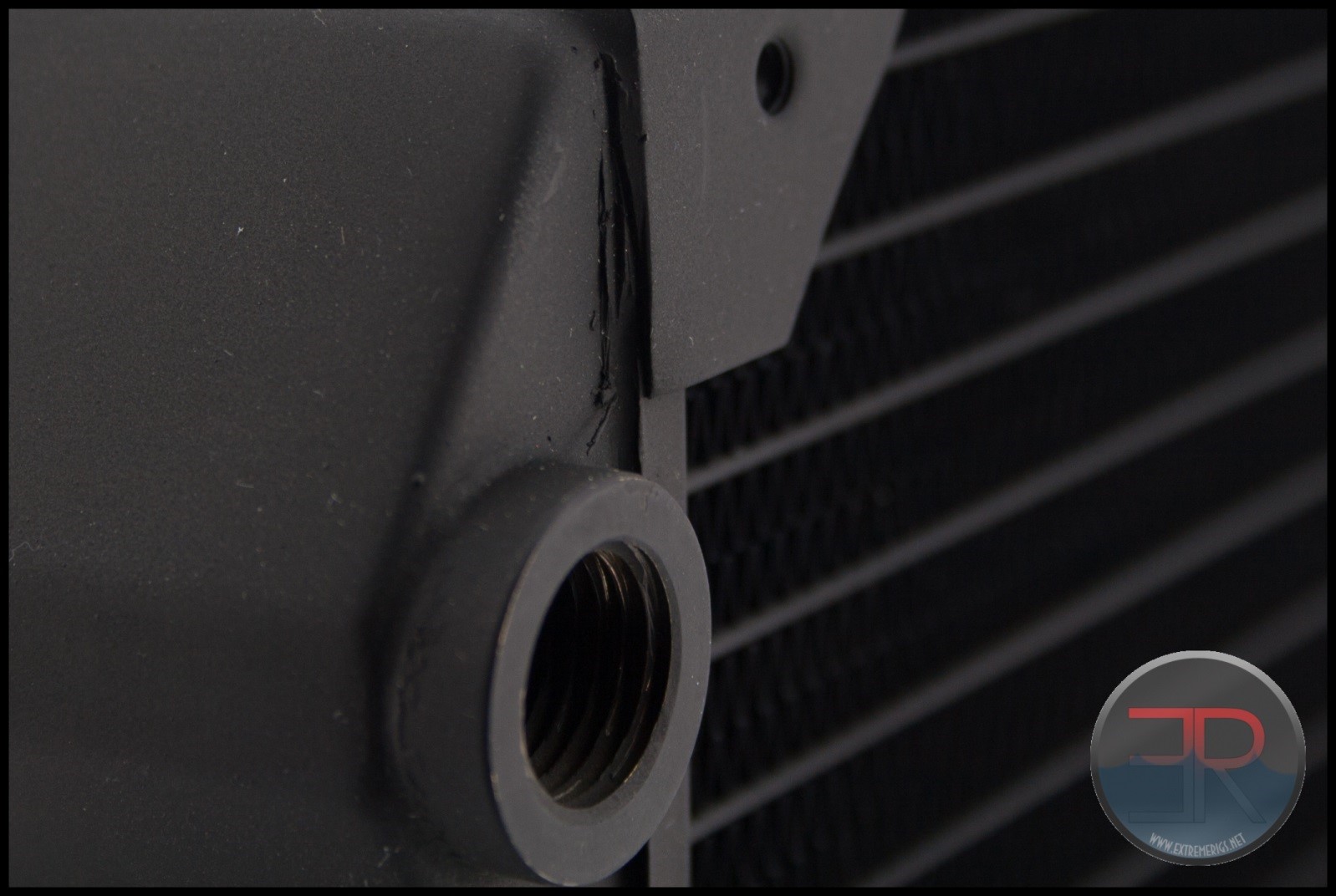
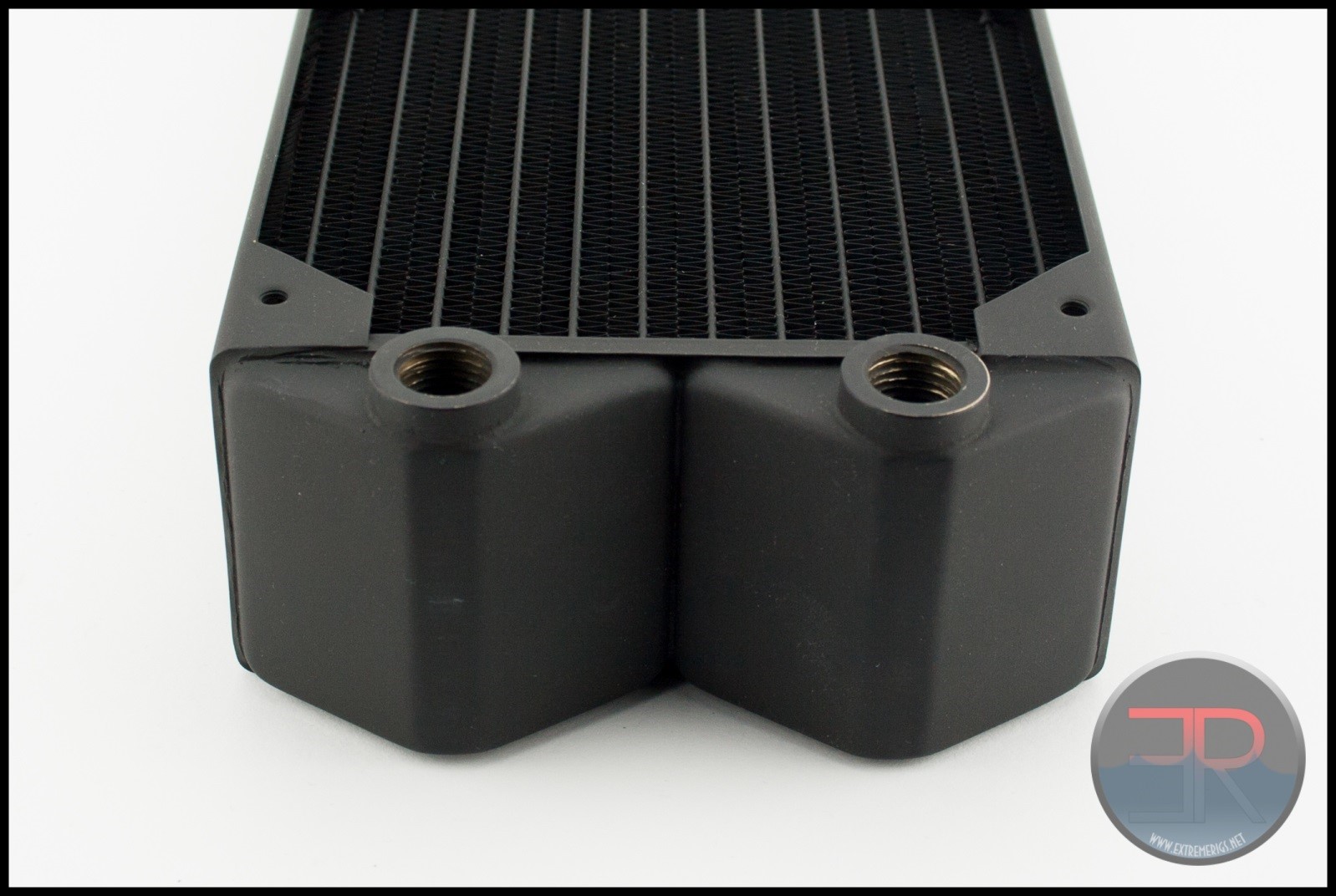
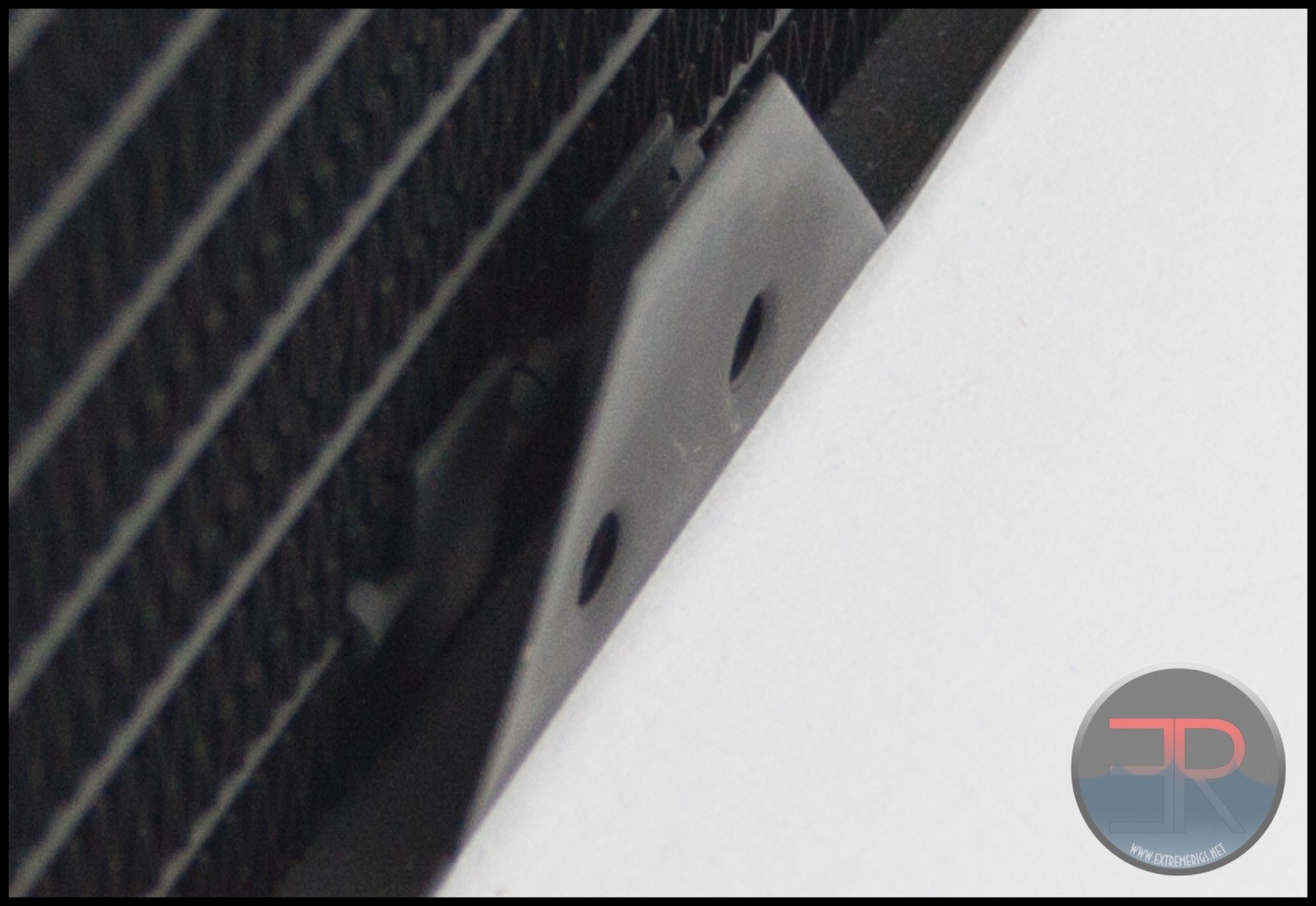
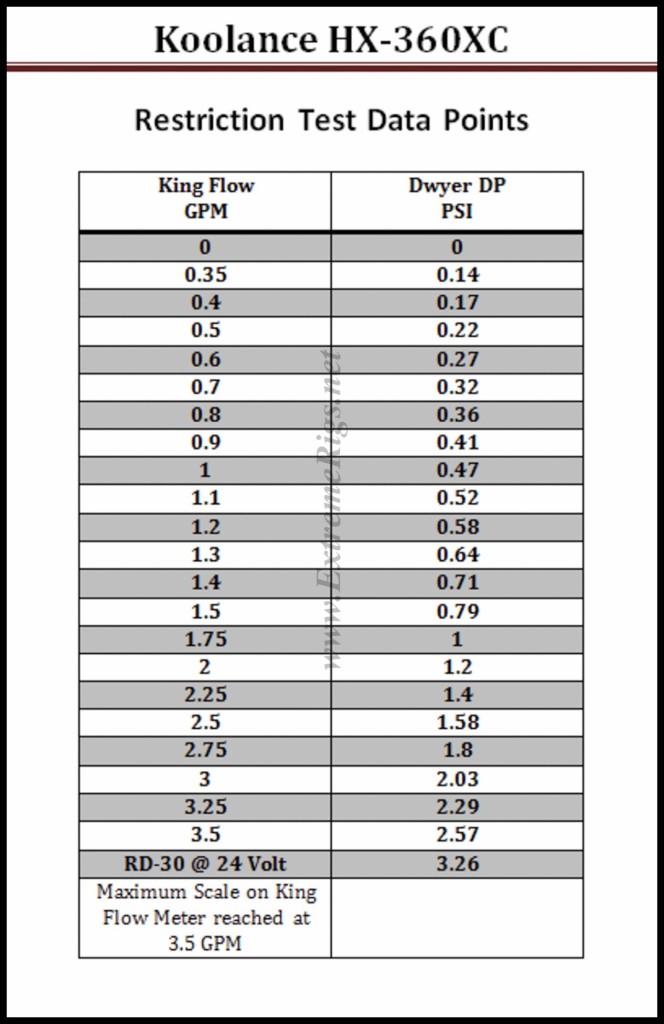
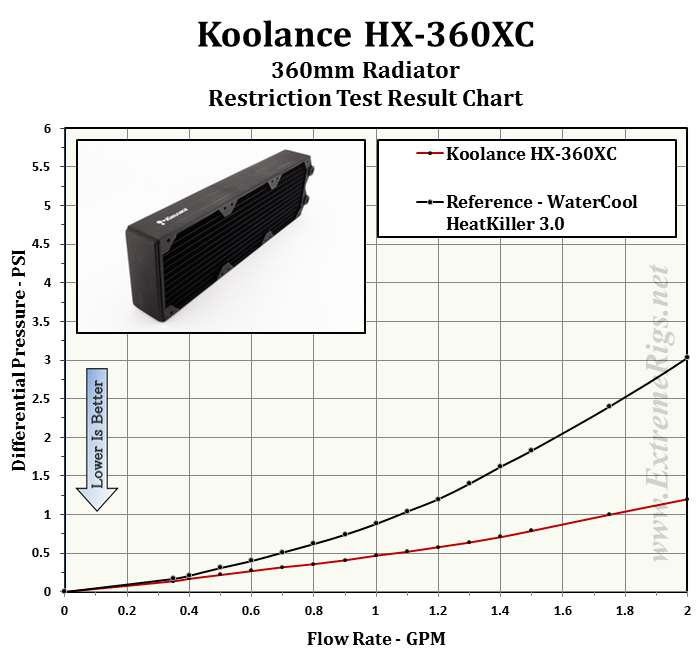
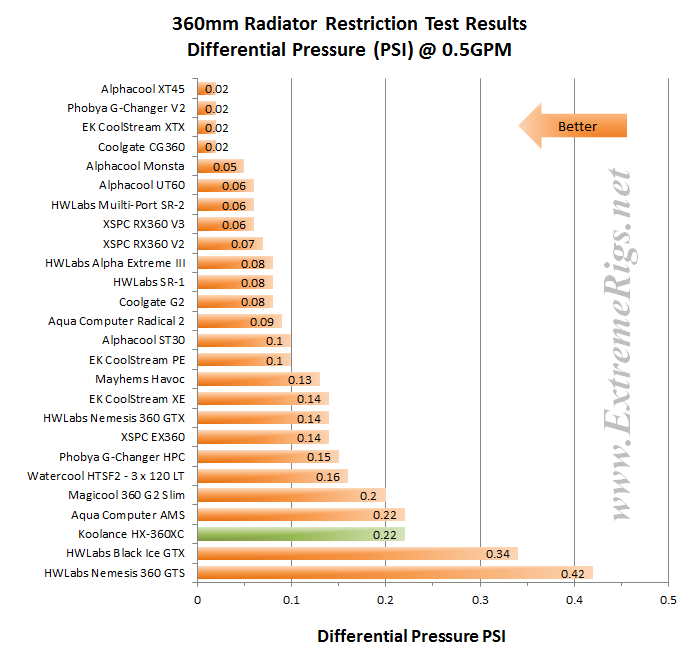
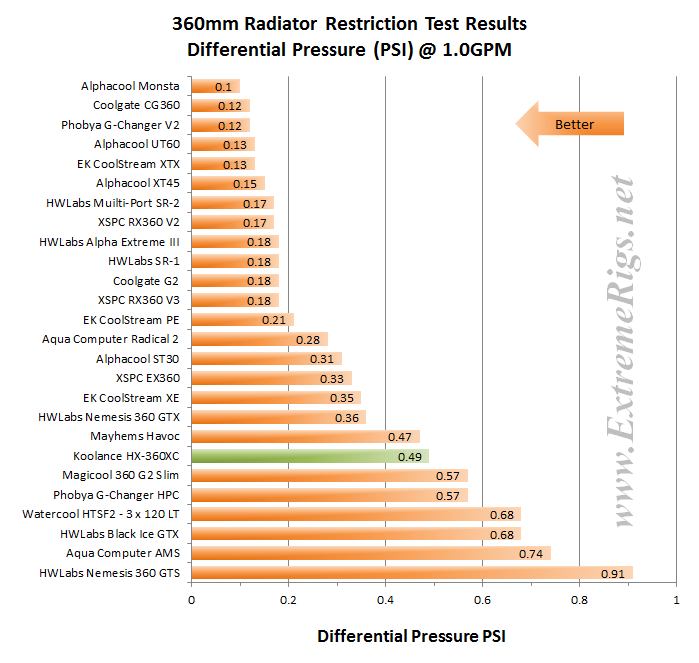
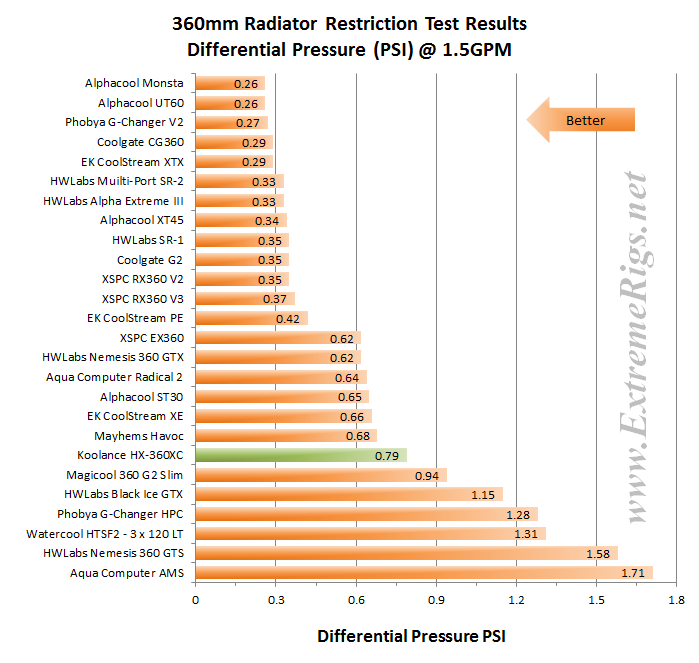
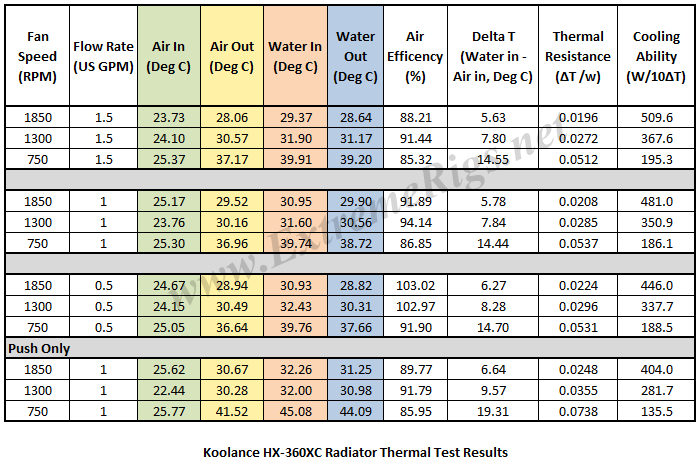
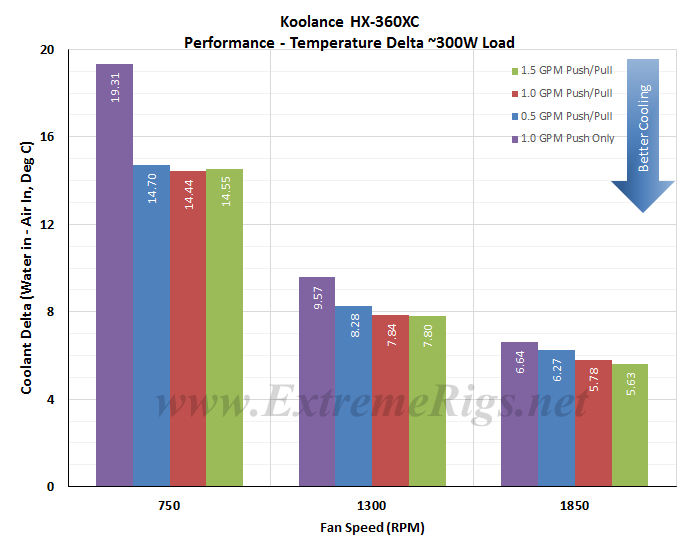
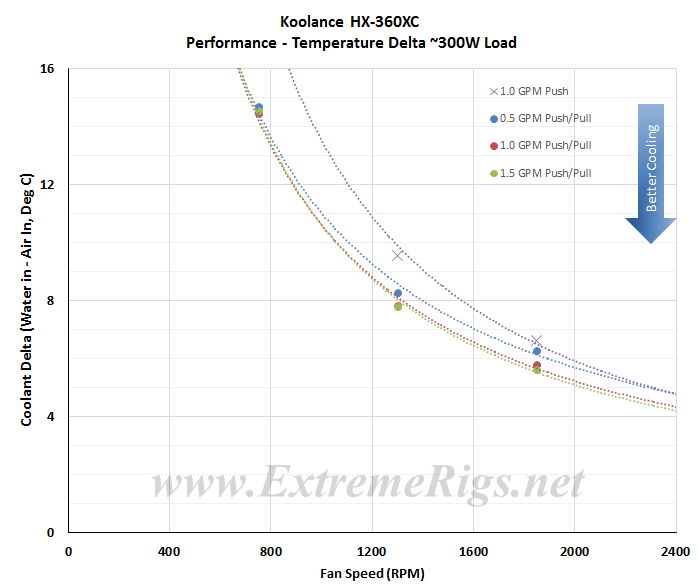
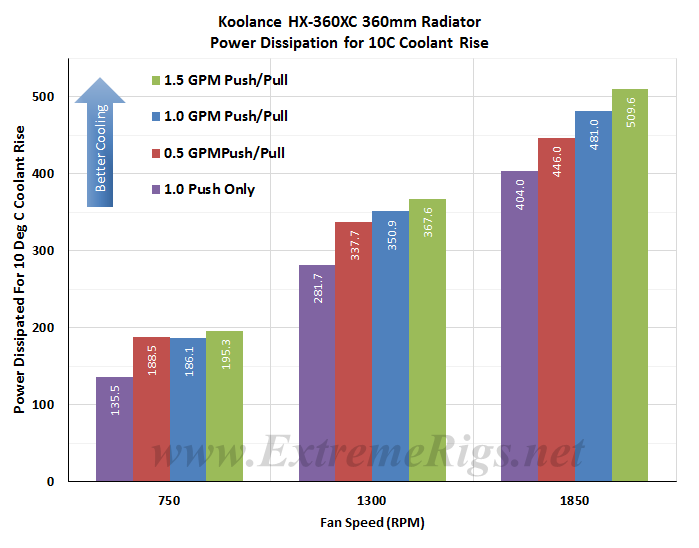
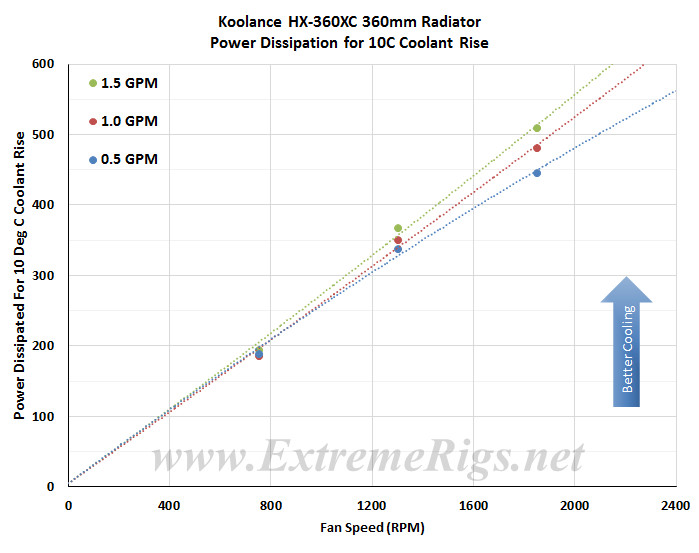
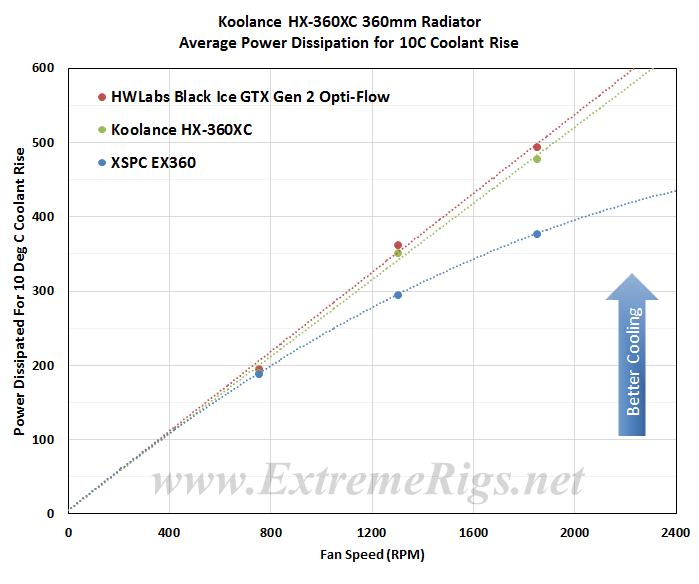
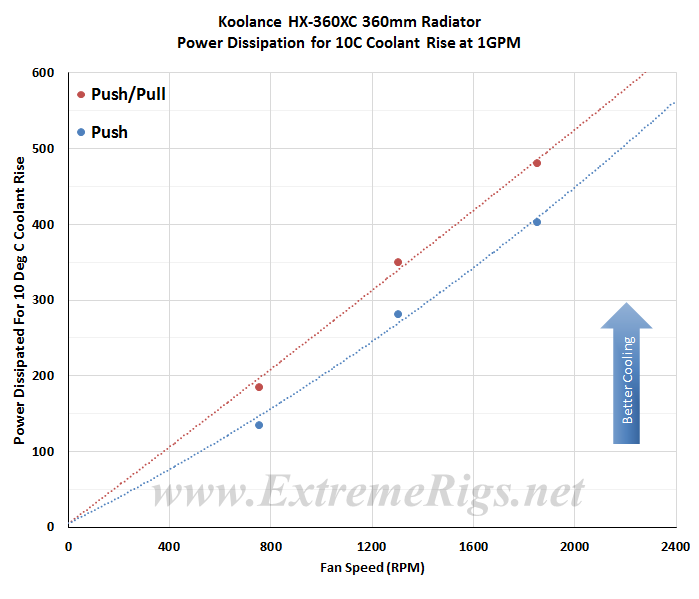
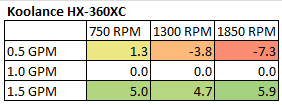
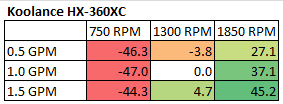
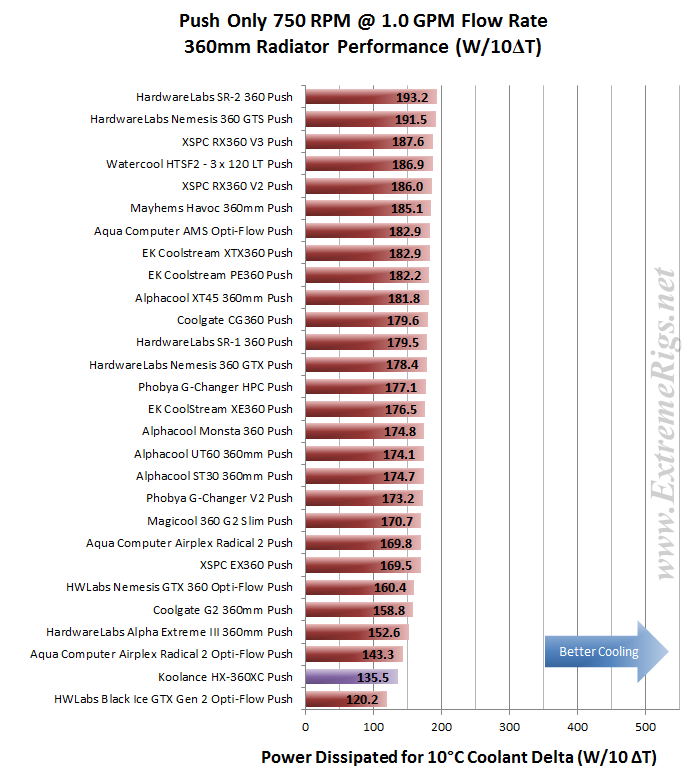
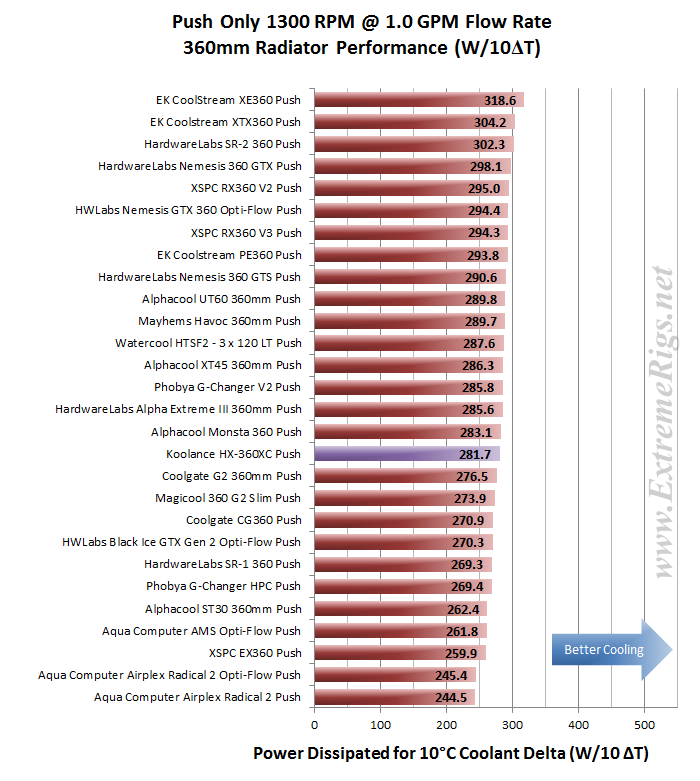
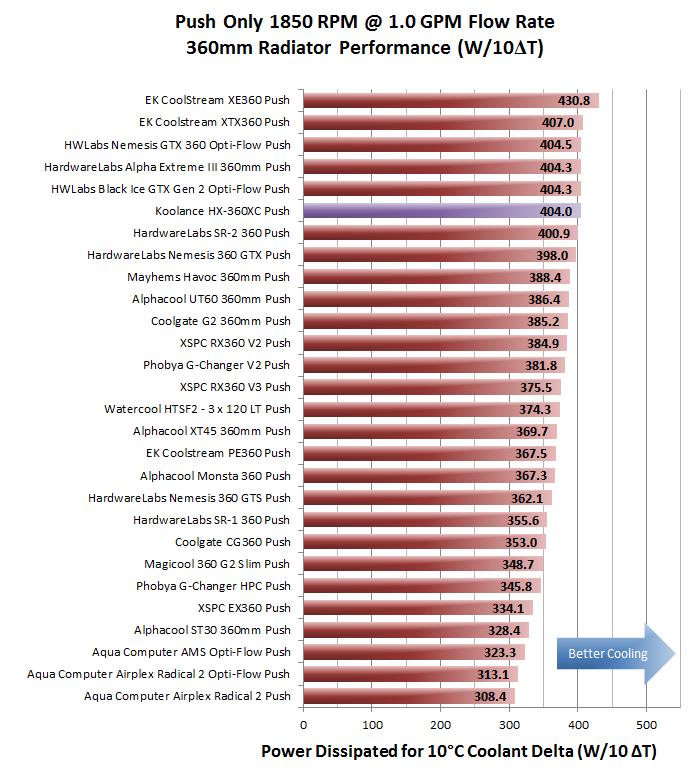
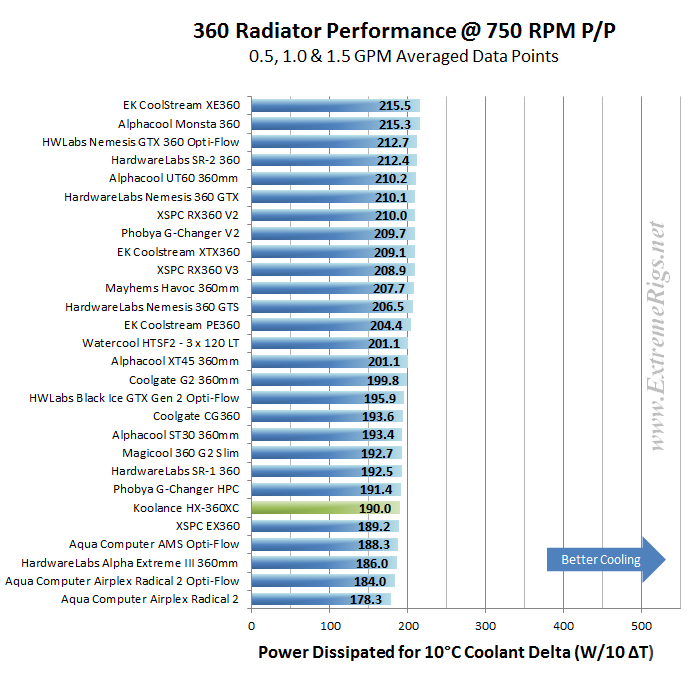
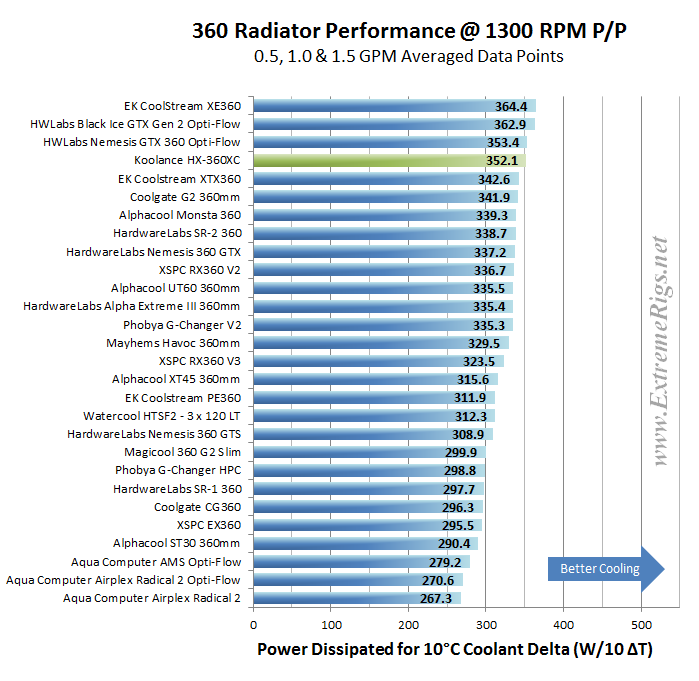
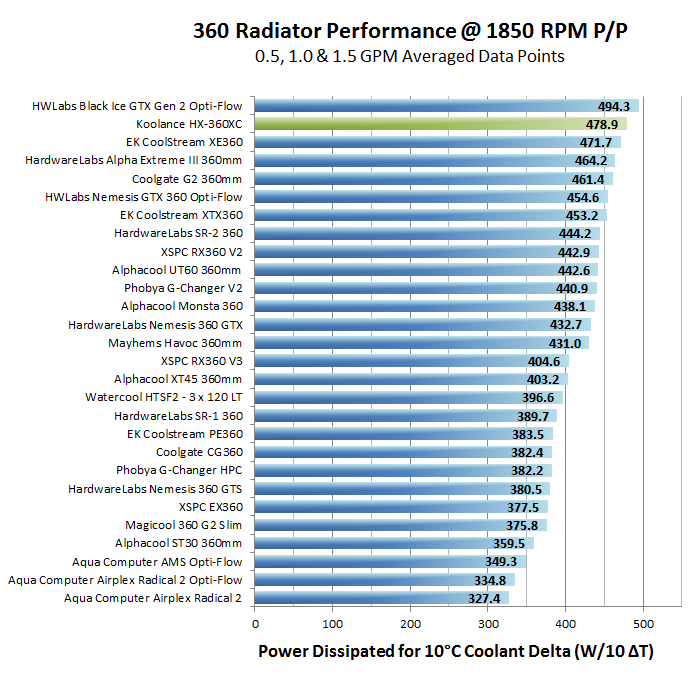
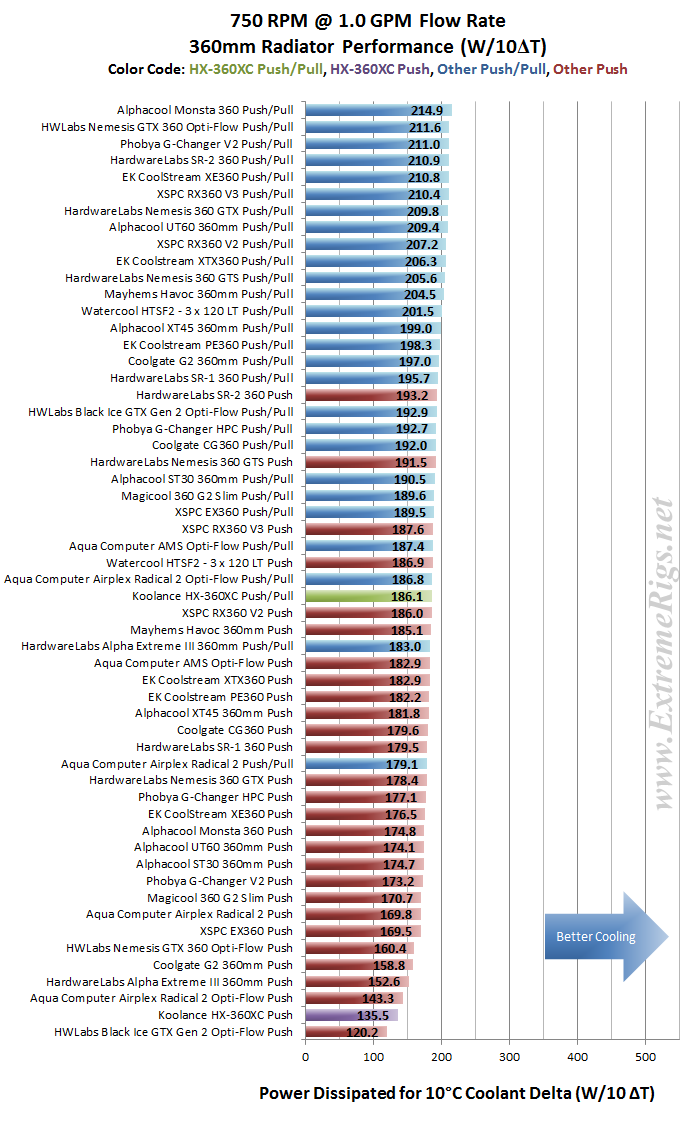
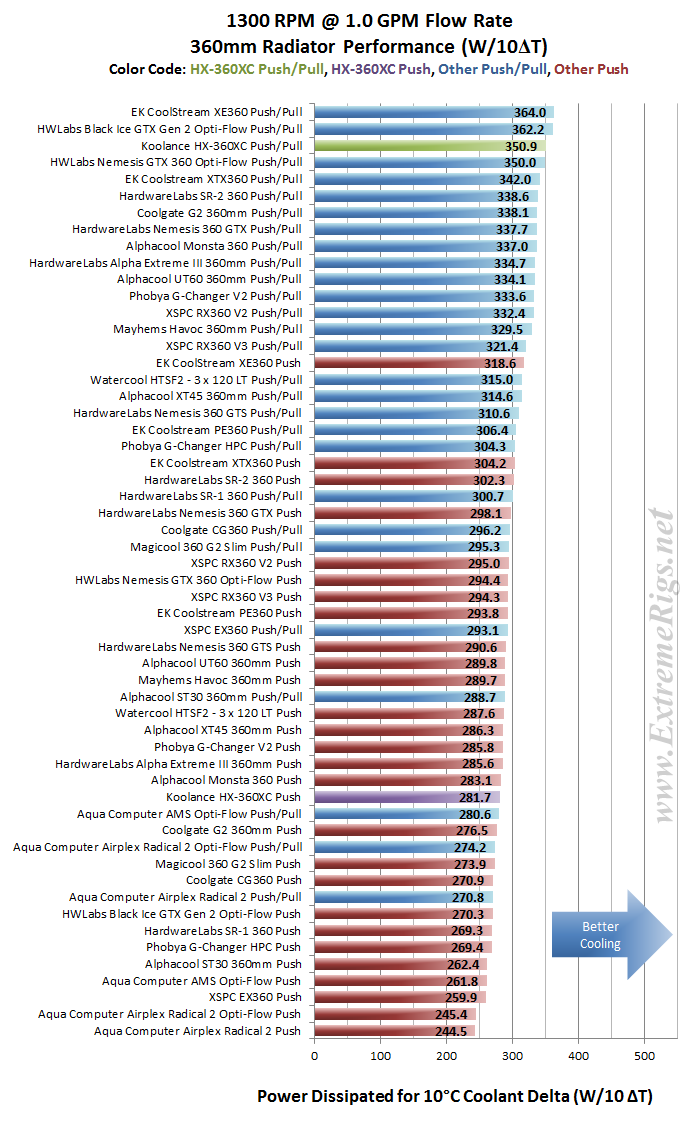
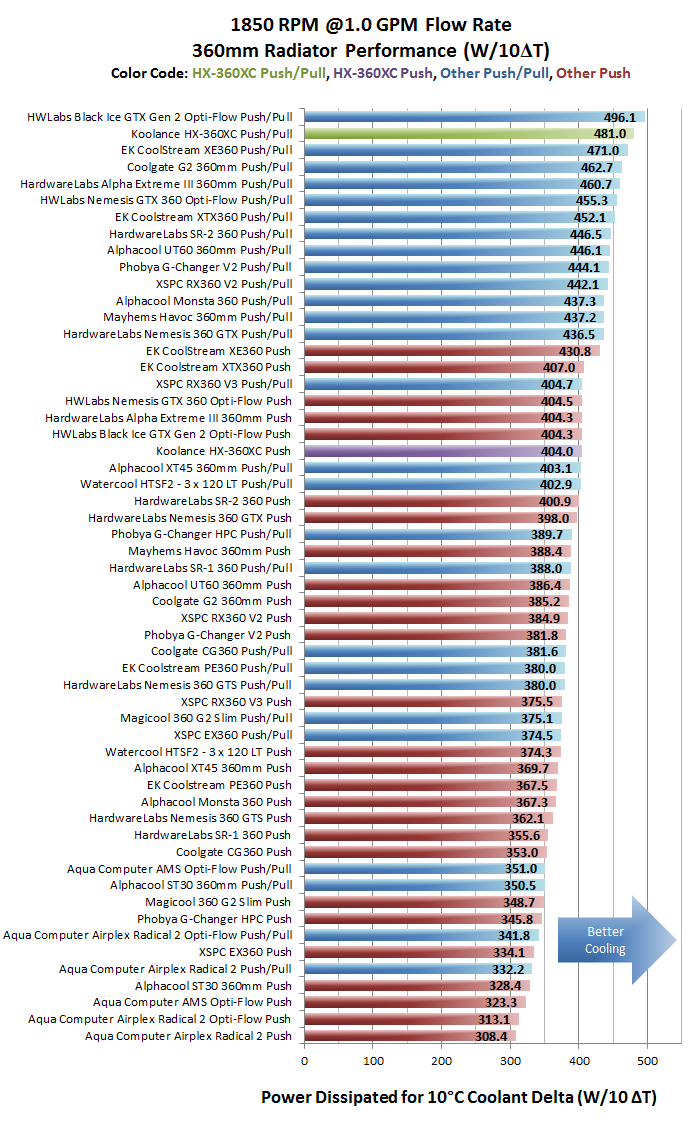
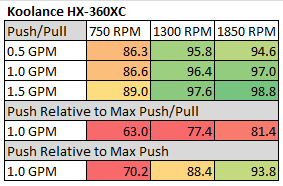
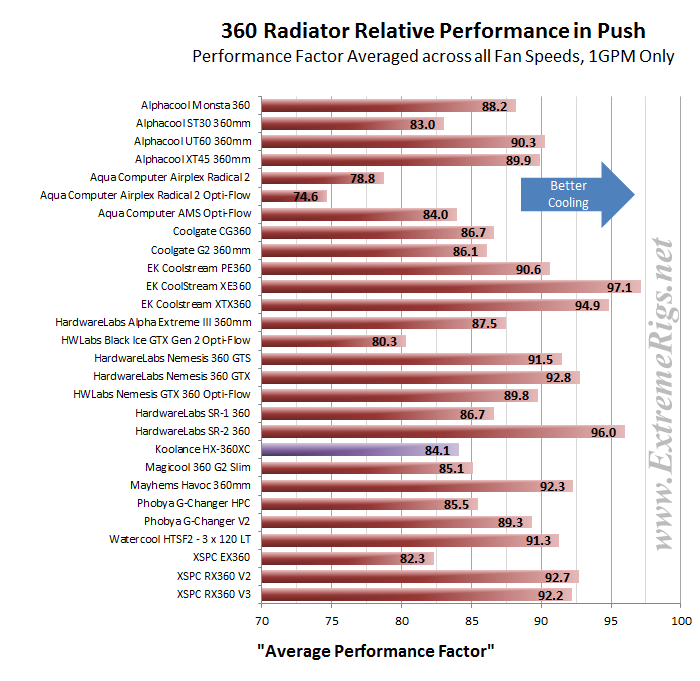
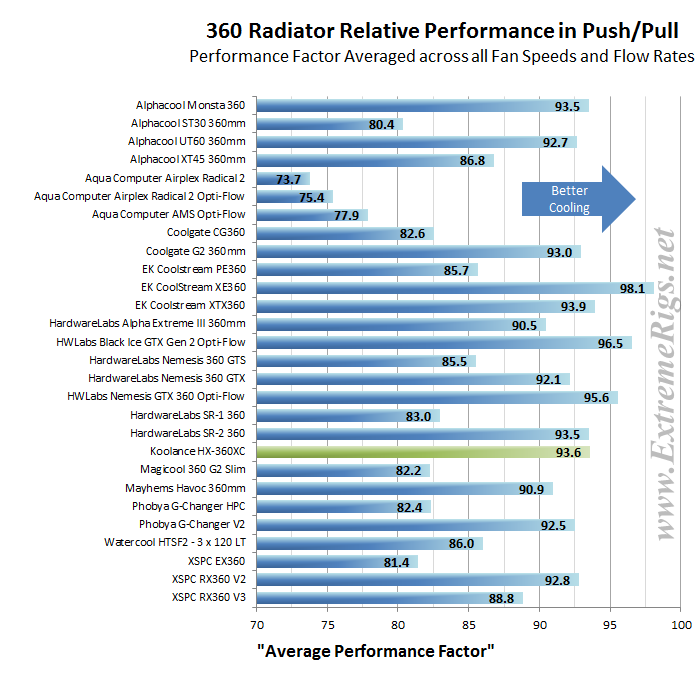
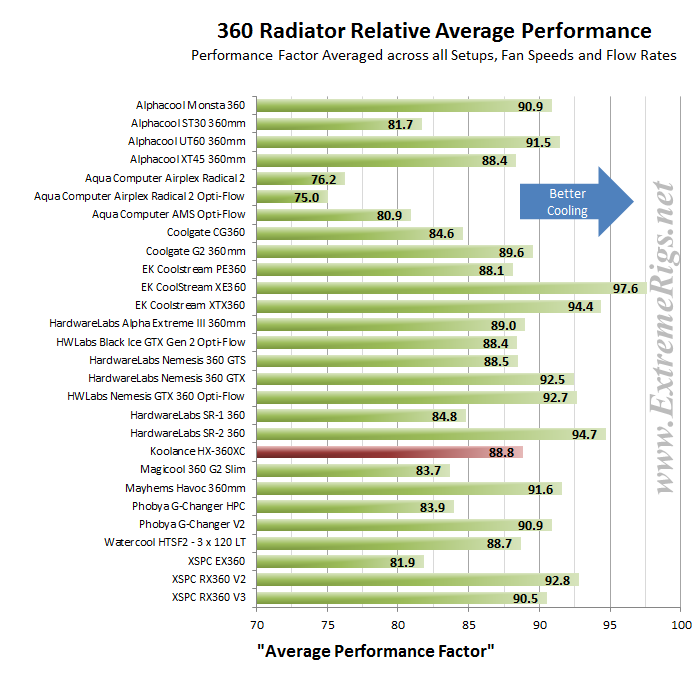
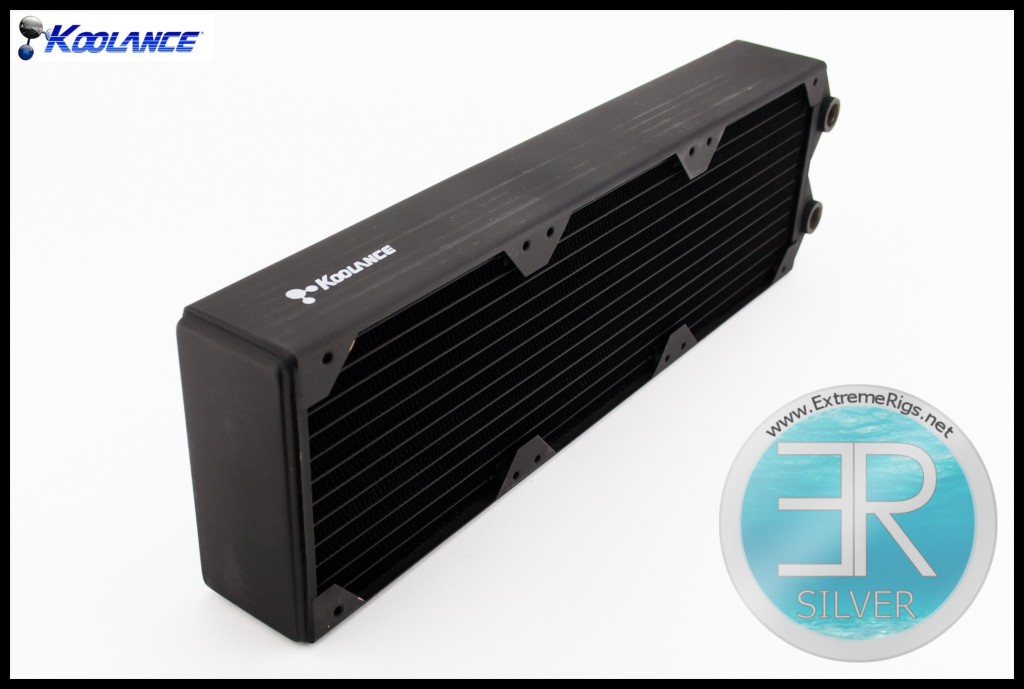




[…] Nemesis GTS 360 Radiator Hardware Labs Nemesis GTX 360 Radiator Hardware Labs SR-1 360 Radiator Koolance HX-360XC 360 Radiator Magicool G2 Slim 360 Radiator Mayhem’s Havoc 360 Radiator Phobya G-Changer V2 Full Copper 360 […]
[…] I do not think that any of their rads do as this was the same packaging as its bigger brother, the Koolance HX-360XC which we reviewed earlier in the year. They are shipped in what might normally be considered the […]
Comments are closed.